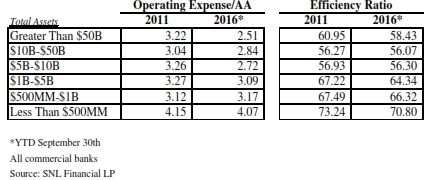What is included in cash and cash equivalents?
Contents:


https://1investing.in/ order is a financial instrument issued by government or financial institutions which is used by payee to receive cash on demand. The advantage of money orders over checks is that it is more trusted since it is always prepaid. They are acceptable for payment of personal or small business’s debts and can be purchased for a small fee at many locations such as post office and grocery. On March 9, 2021, Microsoft acquired ZeniMax Media Inc. for a purchase price of $8.1 billion. For example, a certificate of deposit guarantees an investor a certain rate for a specific period of time, yielding fixed income.
CarMax Reports Fourth Quarter and Fiscal Year 2023 Results – Investor Relations
CarMax Reports Fourth Quarter and Fiscal Year 2023 Results.
Posted: Tue, 11 Apr 2023 10:54:29 GMT [source]
The company should invest in short-term or long-term investments for a certain proportion of it. They might lose an opportunity to earn interest income on extra cash Reserves. The cash-to-total asset ratio of the company is 9.95% which is not very significant. Similarly, the cash-to-sales ratio is 11.74 %, which indicates that most sales are in credit.
Cash equivalent
In practice, the cash and cash equivalents account is excluded from the calculation of net working capital . All of these assets have high liquidity, meaning that the owner could sell and convert these short-term investments into cash rather quickly. To reiterate, the “Cash and Cash Equivalents” line item refers to cash – the hard cash found in bank accounts – as well as cash-like investments.

Treasury bills, also called «T-bills», are a security issued by the U.S. Department of Treasury, where their purchase lends money to the U.S. government. Regular series Treasury bills mature in 4, 13, 26 & 52 weeks from their issue date, which may be purchased via TreasuryDirect or a licensed broker. Petty cash is a small amount of cash that is used for payment of insignificant expenses and the amount of it may vary depending on the organisation. For some entities $50 is adequate amount of cash, whereas for others the minimum sum should be $200.
Definition of Cash Equivalents
Cash equivalents are short-term, highly liquid assets that can readily be converted into known amounts of cash and with little risk of price fluctuations. An example of a short- term cash equivalent asset would be one that matures in three months or less from the acquisition date. They may be considered as “near-cash,” but are not treated as cash because they can include a penalty to convert back to cash before they mature. Examples are treasury bills (T-bills), money market funds, short-term notes receivable, and guaranteed investment certificates .

Businesses add the total value of cash on hand and the total value of cash equivalents to obtain Cash and Cash Equivalents. CCE is represented as the top line item on a company’s Balance Sheet, because they are the most liquid, or readily usable form of asset a company has. The standard suggests a short maturity would be three months or less from the acquisition date.
Cash and Cash Equivalents Meaning
When reported on financial statements, investments in these types of liquid accounts are often combined with cash and represent a company’s total holding of money and liquid investments. A company may be required to hold a certain amount of highly liquid assets as part of a debt covenant. That covenant may not stipulate what the financial product has to be or carry any restrictions on it. For example, a loan may require a company hold a certain amount of cash or cash equivalents. Companies must use cash and cash equivalents to pay invoices and current portions of long-term debts as they come due. Instead of needing to liquidate long-term assets, payment is made with the most liquid assets.
Mirum Pharmaceuticals Announces Proposed Convertible Senior Notes Offering – Yahoo Finance
Mirum Pharmaceuticals Announces Proposed Convertible Senior Notes Offering.
Posted: Wed, 12 Apr 2023 11:00:00 GMT [source]
In July 2014, the SEC issued a final rule that mandates the use of a floating net asset value for institutional prime money market funds. While the rule is not focused on the financial reporting of entities that have investments in money market funds, the changes could impact whether investments in money market funds are considered cash equivalents. The SEC noted that under normal circumstances, qualifying money market funds with floating NAVs will continue to be reported as cash equivalents. However, if credit or liquidity issues arise, including the increased potential for enactment of liquidity fees or redemption gates, investors will need to assess the validity of continuing to account for such money market funds as cash equivalents.
These include white papers, government data, original reporting, and interviews with industry experts. We also reference original research from other reputable publishers where appropriate. You can learn more about the standards we follow in producing accurate, unbiased content in oureditorial policy. CD’s may be considered a cash equivalent depending on the maturity date.
The acid-test ratio is calculated by adding cash, cash equivalents, marketable securities, and accounts receivable. Investing activities – the acquisition and disposal of long term assets and other investments not included in cash equivalents. Example FSP 6-2 illustrates how a reporting entity should reflect the proceeds of a debt offering held in escrow by a bank in the statement of cash flows. Some reporting entities include cash in transit from credit and debit payment processors in cash equivalents while others include these amounts in accounts receivable. There is diversity in practice over the classification of payments from credit card and debit card processors which settle shortly after the reporting date.
As a result, a transfer between restricted and unrestricted cash accounts will not be reported as a cash flow. All cash receipts/payments with third parties directly to/from restricted cash accounts will need to be reported as an operating, investing, or financing cash flow based on the nature of the transaction. Cash and cash equivalents refers to the line item on the balance sheet that reports the value of a company’s assets that are cash or can be converted into cash immediately. Cash equivalents include bank accounts and marketable securities, which are debt securities with maturities of less than 90 days.

The assortment of accounting equation products that comprise the balance of this classification usually have maturities of three months or less, are easily convertible to cash, and must not be tied to restrictions that limit their liquidity. Companies often hold cash and cash equivalents to pay short-term debt and hold capital in secure places for future use. In the table above, the fifth column represents the value Apple assigned as cash and cash equivalents. U.S. agency securities, certificate of deposit and time deposits, commercial paper, and corporate debt securities. In other words, amounts generally described as restricted cash will be included with cash and cash equivalents on the statement of cash flows.
FDIC insurance, for depositors at federally-insured financial institutions, covers principal and accrued interest only up to $250,000. Some lenders may require that, in return for a loan, a company maintain a designated amount of liquid cash equivalents. This financial restriction is intended to protect the lender’s financial interest should business slow. It can also result in better loan terms for the company that agrees to it. Moreover, a company can benefit from the discipline of saving via cash equivalents. Cash equivalents are securities that are meant for short-term investing.
Types of Cash and Cash Equivalents
The composition of cash and cash equivalents also often raises questions. While the balance sheet may combine all cash and cash equivalents into one number, a business can provide further detail about its cash balance in the footnotes to the financial statements. Cash and cash equivalents are not just the amount of currency that a business has in its cash registers and bank accounts; they also include several different types of financial instruments. For cash equivalents, original maturity is a classification made at the time of purchase and is the period of time until the instrument reaches maturity . Therefore a three-year Treasury Note purchased two months from maturity would be classified as a cash equivalent. Since the cash equivalent classification is made at the time of purchase, no reclassification of short-term investments to cash equivalents will be made.
Form 424B3 J.P. Morgan Real Estate – StreetInsider.com
Form 424B3 J.P. Morgan Real Estate.
Posted: Fri, 14 Apr 2023 13:52:07 GMT [source]
These investments can be easily converted to cash and must be short-term, usually with a maturity period of not more than three months or 90 days. Cash and Cash Equivalents are items on a company’s balance sheet that refer to the value of assets held in cash or easily converted to cash. To help users assess solvency, the balance sheet reports the balance of cash and cash equivalents. In general, the short-run solvency of a firm is strengthened by having additional cash and cash equivalents because the firm is better able to meet to short-term obligations; correspondingly, having less creates greater risk. As a practical matter, efficient financial management results in a very low cash balance because any excess funds are invested in cash equivalents.
- Companies that have a lot of forex transactions may face certain exchange risks.
- Cash equivalents are short-term, highly liquid investments with a maturity date that was 3 months or less at the time of purchase.
- For example, maybe the management has not figured out the best way to deploy cash.
- Instead of needing to liquidate long-term assets, payment is made with the most liquid assets.
- ASC 230 does not define restricted cash; instead, it refers to “amounts generally described as” restricted cash or restricted cash equivalents.
- Treasury bills, also called «T-bills», are a security issued by the U.S.
This interest rate and income security may be desirable for certain savers. The quick ratio is a calculation that measures a company’s ability to meet its short-term obligations with its most liquid assets. Even buying one-month Treasury bills may yield higher rates than what a company may get on their savings account.
- Similarly, compensating balances maintained by related parties for the reporting entity’s benefit should be disclosed in the footnotes.
- ASC 210, Balance Sheet, indicates that a reporting entity’s cash account at a bank is not considered an amount owed to the reporting entity for purposes of determining whether a right of offset exists.
- Regardless of whether the reporting entity has met the compensating balance requirement, there should be disclosure of the sanctions for noncompliance under a compensating balance arrangement.
- The rationale is that cash and cash equivalents are closer to investing activities, rather than the core operating activities of the company, which the NWC metric attempts to capture.
These debt instruments are issued by the United States government and often have a maturity date of one year or less. Here’s an example of how to visualize your current Cash and Cash Equivalents data in comparison to a previous time period or date range. The consolidated profit or loss for the period, net of income taxes, including the portion attributable to the noncontrolling interest. Amount before tax of foreign currency transaction unrealized gain recognized in the income statement. This content outlines initial considerations meriting further consultation with life sciences organizations, healthcare organizations, clinicians, and legal advisors to explore feasibility and risks. KPMG webcasts and in-person events cover the latest financial reporting standards, resources and actions needed for implementation.
The current ratio is a liquidity ratio that measures a company’s ability to cover its short-term obligations with its current assets. Cash equivalents are highly liquid investment securities that can be converted to cash easily and are found on a company’s balance sheet. Cash equivalents are short-term investments that can be easily liquidate, carry low risk of loss, and have active marketplaces to ensure quick transacting. These instruments can easily be converted to cash but are classified differently because they are not actual claims of ownership of cash. In Note 3 to its financial statements, Apple provides a substantial amount of information regarding what comprises this cash and cash equivalent balance. Apple classifies its broad assortment of financial instruments as cash, Level 1 instruments, or Level 2 instruments .
